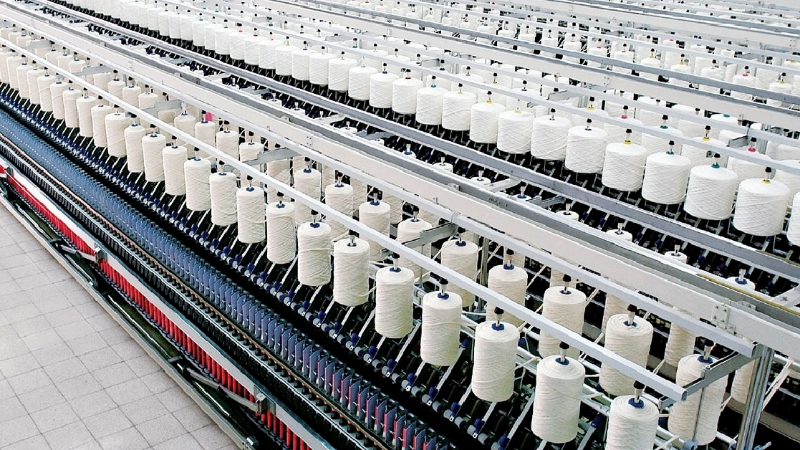GET IN TOUCH
- Please wait...

RMG sector in Bangladesh started its modest journey as a small non-traditional sector of export in the late 1970s and transformed itself as the country’s highest revenue-generating sector within three decades, contributing 81% (USD 24.49 billion FY 13-14) of the country’s total export. During Jul 14 – Feb 15 period, garments export clocked USD 14.44 billion, a 1.91% hike from the comparable period last year.
Recent political turmoil has significantly disrupted the production supply chain and international buyers are increasingly getting jittery with placing new orders. On the international front, competitors like Pakistan and Vietnam are surging ahead with access to preferential trade agreements. Although favorable labor costs provide competitive strength to Bangladesh, problems remain with inadequate infrastructure and sporadic utility supply.
The spinning sub-sector remains crucial to the RMG value chain helping to stabilize the supply chain while controlling costs. The products of the spinning sub-sector are cotton yarn, polyester, synthetic yarn, woolen yarn, and blended yarn mixed of cotton and polyester of different counts (mostly up to 80 counts). Yarns are being used by the weaving sub-sectors like specialized textiles, handlooms, knitting, and hosiery. The growth in the export of clothing with the phasing out of MFA in 2005 has led to the setting up of 350 spinning mills and there has been a boost in investment since 2001. The private sector spinning mills can now meet around 100% demand for yarn at the domestic level as well as 95% of the demand for yarn for export-oriented knit fabrics mills. In addition, almost 85% of cotton yarns and 50% demand for synthetic and blended yarn of export-oriented fabric-producing mills are being met by the private sector spinning mills. (Source: Bangladesh Textile Mills Association) The rest of the import is being met from China and India.
Although Bangladesh has production capabilities in the manufacture of thread and fabric, the country has to import almost all raw materials, primarily cotton and other man-made fiber e.g. polyester, Viscose, and Staple Fiber. The country spends substantial foreign exchange every year to import raw materials and accessories to feed the RMG sector. In FY 2012-13, the country spent about USD 5.27 billion only to import cotton, cotton yarn, and fabrics as well as knit fabrics. Since cotton is the key imported raw material, international price volatility has a direct impact on the spinning sub-sector.
Since the middle of 2011, cotton prices have declined which eventually started stabilizing from the middle of 2013 onwards. In the latest United States Department of Agriculture (USDA) report, the forecast for 2014/15 world cotton harvest was revised slightly higher (+206,000 bales to 119.4 million) while the forecast for world cotton mill-use was revised lower (- 985,000 bales to 111.3 million). An effect of higher production and lower consumption estimates was a 1.2 million bale increase to the figure for global ending stocks (to 109.8 million bales). Given rising production trends and slowing demand, prices are expected to either remain stable or decrease in 2015.
In 2014-15, Bangladesh is projected to increase raw cotton import by 7.6% to 4.2 million bales on sustained export demand for value-added products, particularly by the RMG sector. The main raw cotton exporters include India (35% market share) and Uzbekistan (25% market share).
Bangladesh has no import duties for polyester, viscose, acrylic, synthetic, and modacrylic staple fiber. The duty for textile chemical dyes is 5 percent. Export-oriented RMG factories can import yarn and fabric under a duty drawback incentive, which reimburses all customs duties paid on imported yarn and fabrics (but not taxes such as the VAT and Advanced Income tax). Imports of all textile raw materials, including fabrics, have no quotas.
Under the GSP ruling enacted a couple of years back, exporters are getting zero-duty facilities even if the products are made from imported fabrics. Previously, the exporters used to benefit if only local fabrics were used. With the effect of the current one-stage rules of origin, the country’s 100 percent apparel exports to the EU, Norway, Switzerland, and Turkey are now availing the GSP benefit, earlier only 42.72 percent of the woven-wear textiles could benefit from the GSP system. The Previous GSP Policy which required a two-stage transformation for clothing export facilitated Bangladesh to build up and invest heavily (Euro 4.00 billion) into the backward linkage textile industry. The change in ruling opened the door for RMG manufacturers to directly import fabric from abroad which had negatively impacted local spinners.
The spinning sub-sector is largely dependent on the overall success of the RMG sector. With raw materials largely imported, spinners have to rely on the price stability of cotton and other imported raw materials. Some spinners at times have engaged in speculation resulting in a significant loss in 2011. However, the spinning sector can add value by providing significant cost advantages to the RMG sector through efficiency, provided proper infrastructural support is there.
Our experts can help you solve your unique challenges
Stay up-to-date with our Thought Leadership and Insights